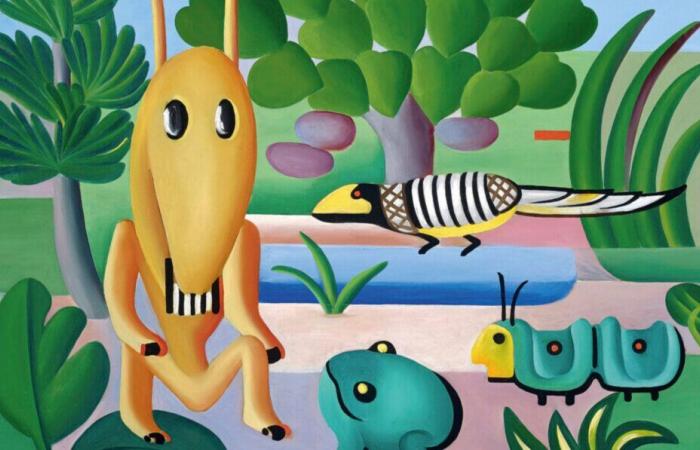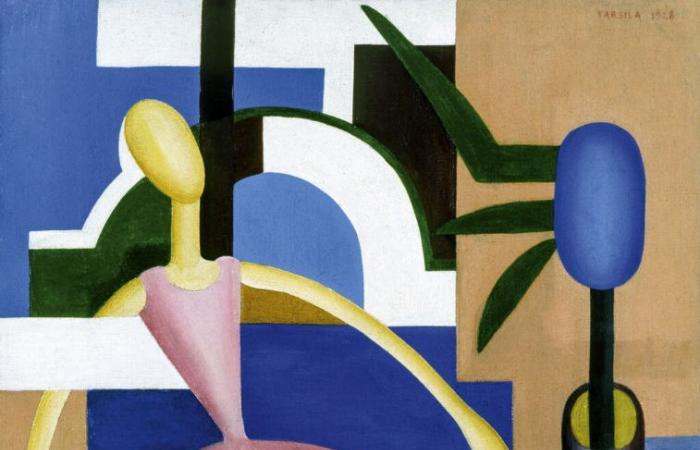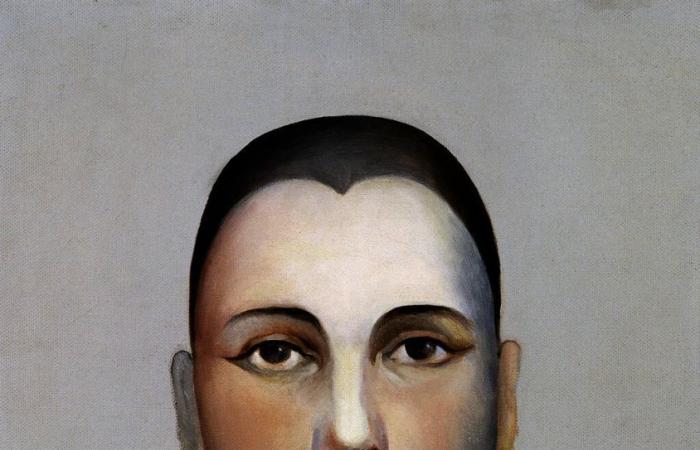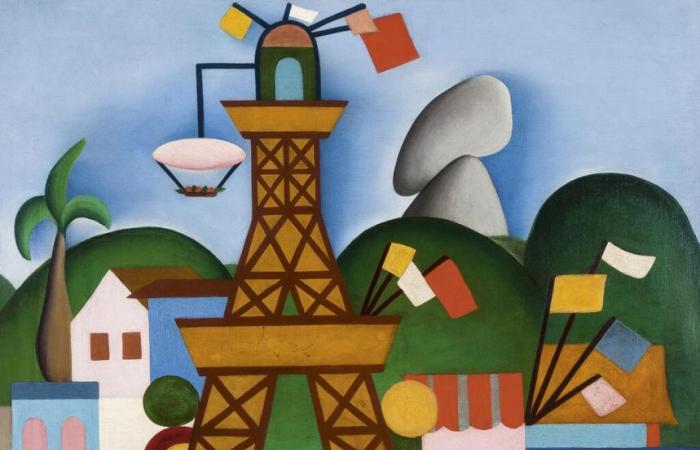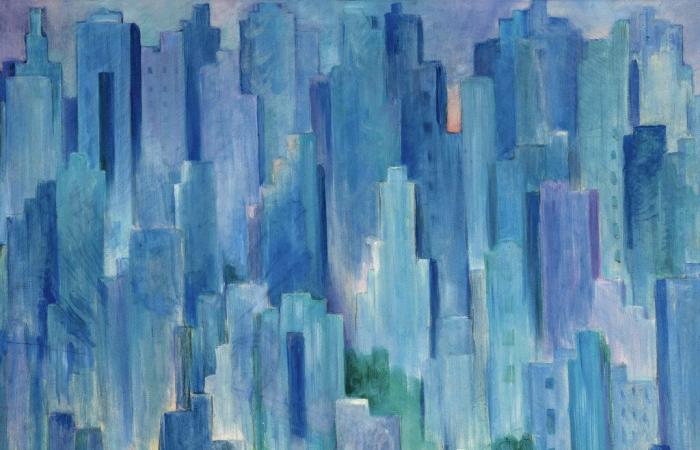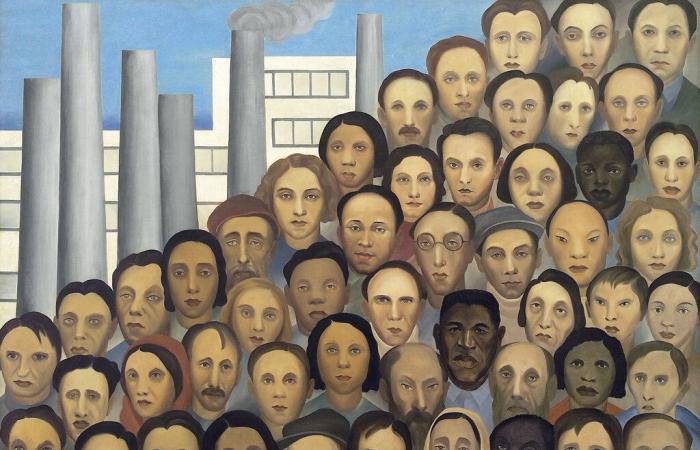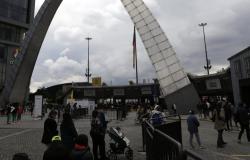The colorful and vibrant work of Tarsila do Amaral (Capivari, 1886 – São Paulo, 1973) brings us closer to the modernity that the Brazilian artist helped build with other intellectuals. Amaral is an original painter that flows between the indigenous and popular imaginary and the modernizing dynamics of a country in transformation.
Painting modern Brazilat the moment in the Guggenheim Bilbao, it is divided into six thematic sections that introduce us to the work of this central figure of Brazilian art. The tour is completed, as always, with the Didaktika section and with pedagogical activities and materials, an ideal proposal to know the legacy of Tarsila do Amaral.
The artist was born in Capivari in 1886 in a cultured family of great landowners. This facilitated traveling during the 1920s between São Paulo and Paris, becoming a bridge between the avant -garde of both cultural capitals. His work inspired Pau-Brazil and anthropophagy movements, which were looking for an authentic, multicultural and multi-regular Brazil. They had the purpose of refunding relations with the European colonization centers.
From the 30s, Amaral approached communism and his art became more social. His paintings began to reflect the industrialization of his country and the reality of workers. His gaze would accompany until the sixties the deep changes in the rural and urban environment. The work of Tarsila do Amaral is a work open to change, in tune with his time.
Between São Paulo and Paris, the trip to modernity
In 1920, Tarsila do Amaral made his first study trip to Paris, as usual were the Brazilian academic painters of the moment. While she was in Europe, in February 1922, the Week of Modern Art gave a new impulse to the artistic scene of São Paulo.
Young artists, writers, painters and musicians sought to free themselves from imported models without giving up cosmopolitism. Thus was born a new Brazilian artistic avant -garde. Upon his return from Paris a few months later, in June 1922, Amaral immediately joined this renewal. I would do it by the painter’s hand Anita Malfatti and writers PAULO MENOTTI DE PICCHIA, Mário Y Oswald de Andrade. They would all form in group of five.
In 1923 he returned to Paris with a renewed mentality and looking for a direct confrontation with European avant -garde. He knew Cubism and found in him a method of analysis and formal logic to appropriate the physical and mental landscape, breaking conventions.
In the sample you can see The doll (“A Boneca”), work painted in 1928, several years after the Parisian journey. It shows the influence of Fernand Légerwhose study frequented, and its personal interpretation of the theories of Albert Gleizesyour main teacher. The Freshness and Balance Distillata box between shapes and colors.
Amaral was forced to battle against artistic prejudices doubly, as a woman and Brazilian in a Eurocentric and male world. She was also a beautiful woman who caught her attention for her physique and her way of dressing. He used this to build his character as a Brazilian artist woman, subverting the established canons with their self -portraits.
He turned his face, with the strange hair collected behind, the carmine on the lips and long slopes, in his brand. That Self -portrait i (1924) will illustrate the cover of the catalogs of almost all the exhibitions that Amaral will perform in your life.
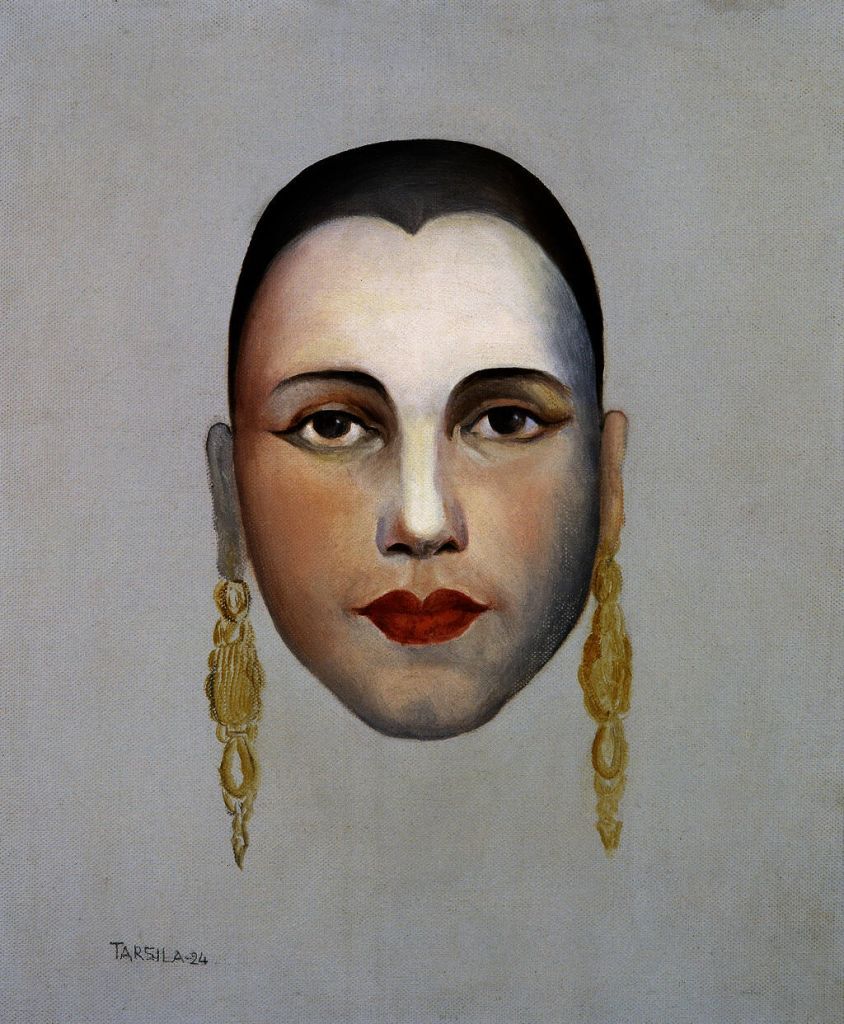
The landscapes
The landscape, both urban and rural, is one of the fundamental reasons throughout the entire trajectory of Amaral. The temporary departure from his land allowed him to acquire a new awareness of his origins. In addition, he warned the fascination that his group of friends felt in Paris for the exoticism of his tropical country.
-From 1924 I would rediscover the metropolis of São Paulo, Rio de Janeiro and the Minas Gerais region. He chose the elements that he believed of an authentic Brazil and transcribed them as a harmonious, simple and modern language.
The urban appears in View of the Paris Hotel (1920) o Carnival in Madureira (1924). In E.F.C.B.from 1924, for example, the train appears, a generator of change and that became a recurring motive of the author in the 20s. The industrial landscape will also appear in subsequent social paintings.
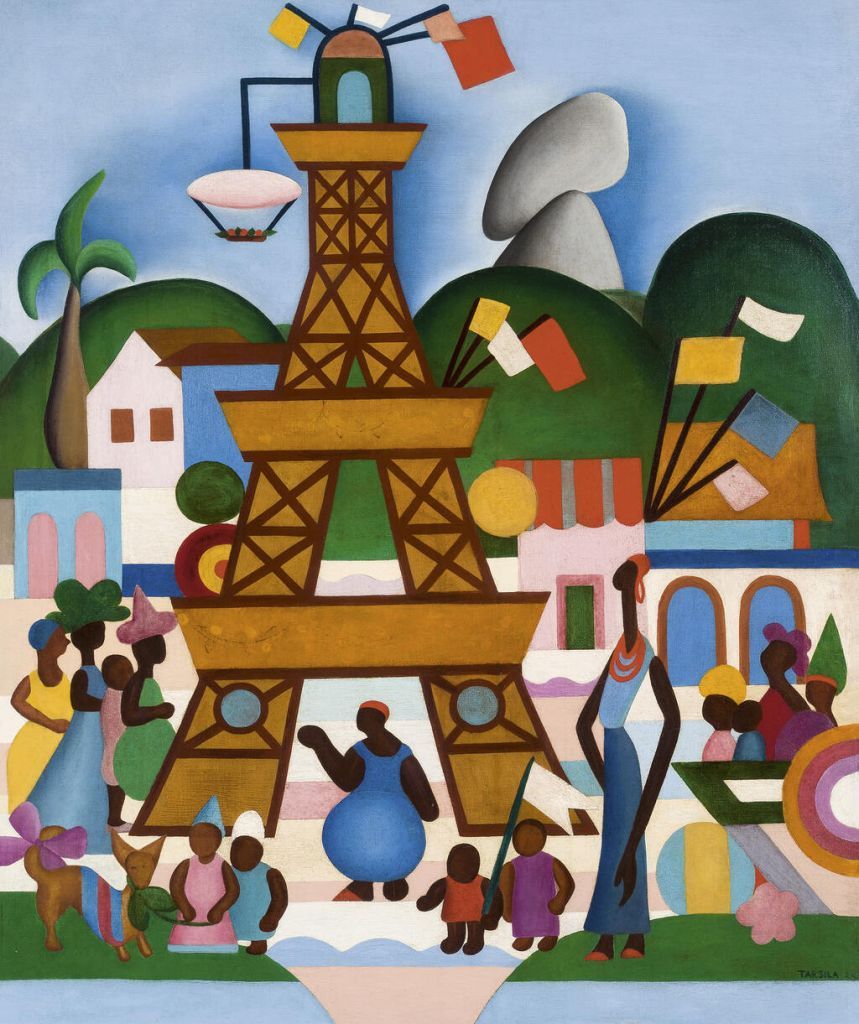
In 1950 Amaral resumed and updated the reasons for his previous compositions. At that time it belongs Village with bridge and papayo (“Vilarejo Comonte e mamoeiro”) (1953), which can be seen in the exhibition. Amaral was very attentive to the change produced on the horizon of the city and that produced in the artistic scene of his country. Between 1920 and 1960 the landscape had changed radically and with it its representation.
On the other hand, in the late 50s, geometric abstraction was triumphing among young artists. The metropolis (1958) is a picture of great beauty, almost abstract, which represents the skyscrapers of modern urban space, with gray, blue and purple tones.
With this piece Amaral approaches the experimental geometries of young artists. With them he had shared the rooms of the São Paulo Biennial and Venice of the 50s and 60s.
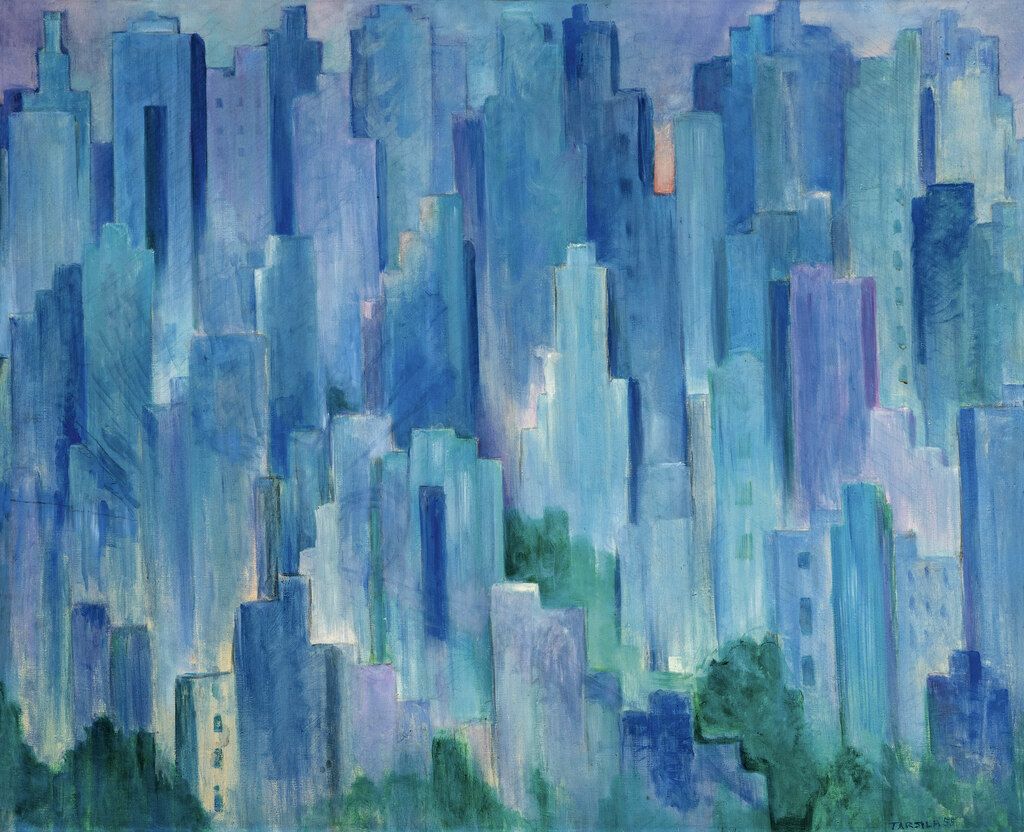
The people
The people, the folkloric people and characters that make it up is the other great interest of Amaral. Also in the representation of characters he had to respond to the demand for exoticism by Europe. Through his painting he helped build a national and modern imaginary based on miscegenation between indigenous, Portuguese and African cultures.
We see in the paintings of 1924 and 1925 a total idealization of the lowest classes, idyllic carnival and favelas, colorful and cheerful scenes. As the aforementioned Carnival en Madureirawhere the real replica of the Eiffel Tower appears in said neighborhood of Rio de Janeiro. In the beautiful Baptized from Macunaíma (1956), Amaral incurs the same idealization when representing the natives.
From 1929 the life of Tarsila do Amaral gave a change as a result of the CRAC of the New York Stock Exchange. His standard of living descended drastically when his properties were mortgaged. He began to be interested in the Soviet economic and social model and even traveled to the USSR. All this will bring you to jail briefly during the Getúlio Vargas regime and influenced the style and content of its new paintings.
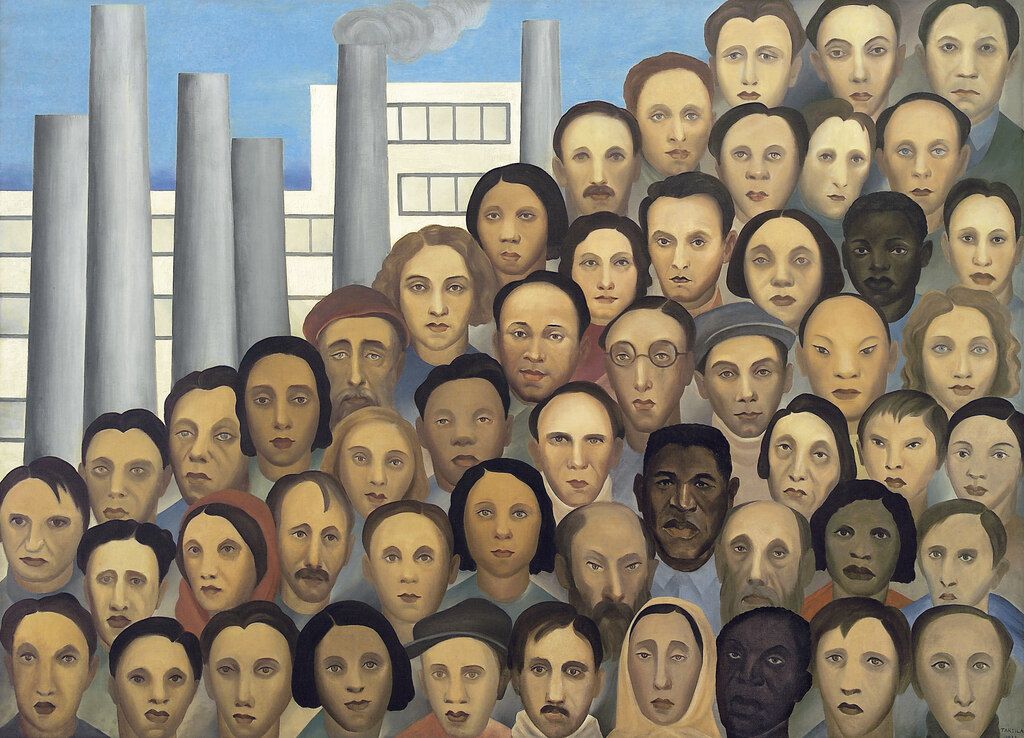
Within social realism, then, he turned his gaze again to the most disadvantaged social classes, which became real protagonists of his work. Little by little, the most vivid colors give way to a more sober palette, as we observe in Workers (1933), Seamstresses (started in 1936 and finished in 1950) and Tierra (1943). Both show the changes of thought and the critical and poetic look of the Brazilian artist.
The exhibition Painting modern Brazil It is the ideal opportunity to know in depth that look and that work of the essential Tarsila do Amaral. The exhibition, organized alongside Le Grandpalaisrmn and curated by Cecilia Braschi and Geanin Guitorrez-Guiranescan be seen until June 1, 2025 at the Guggenheim Bilbao.

